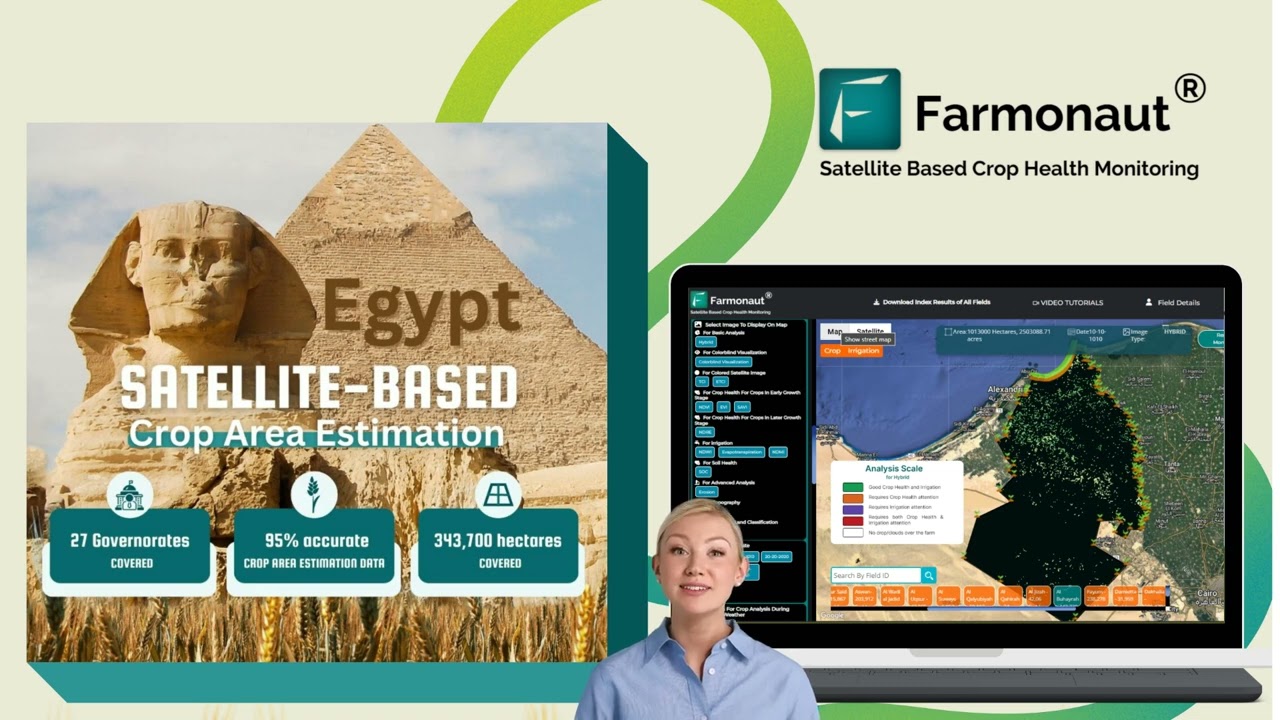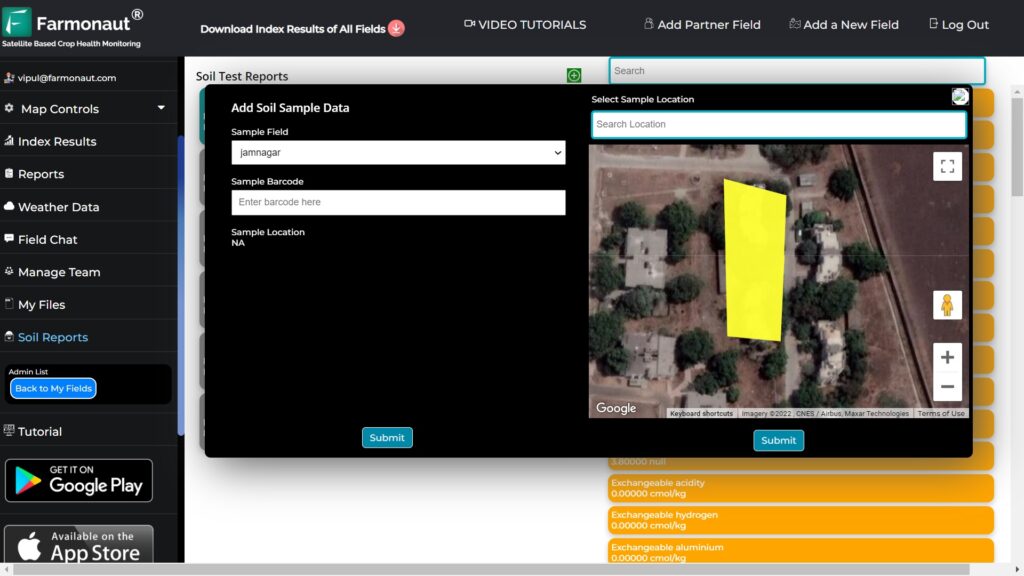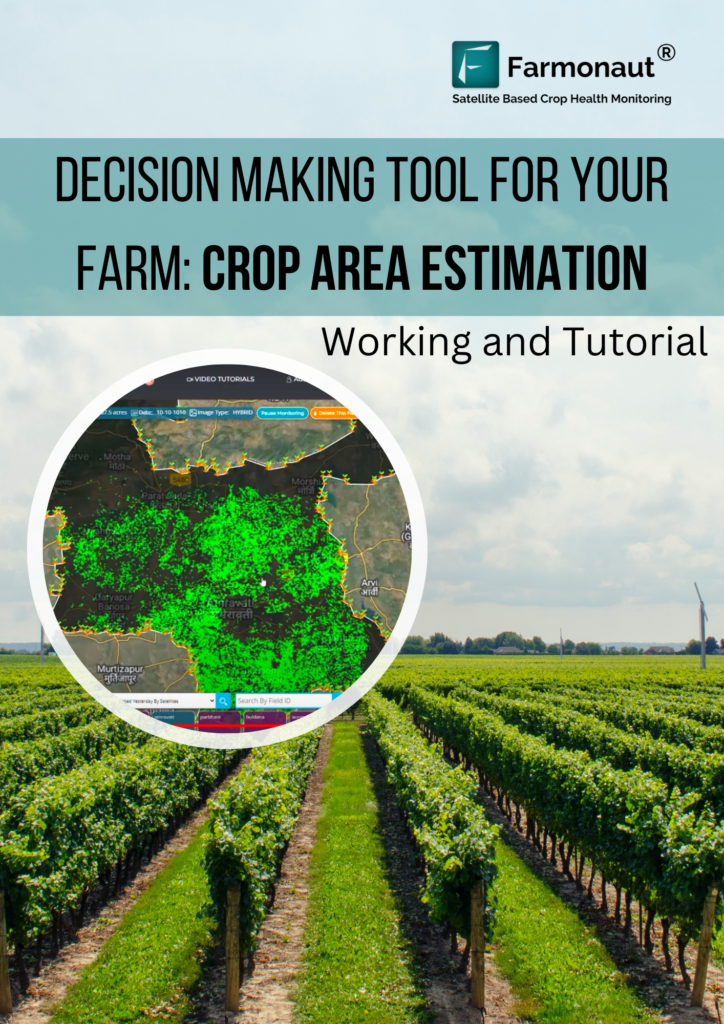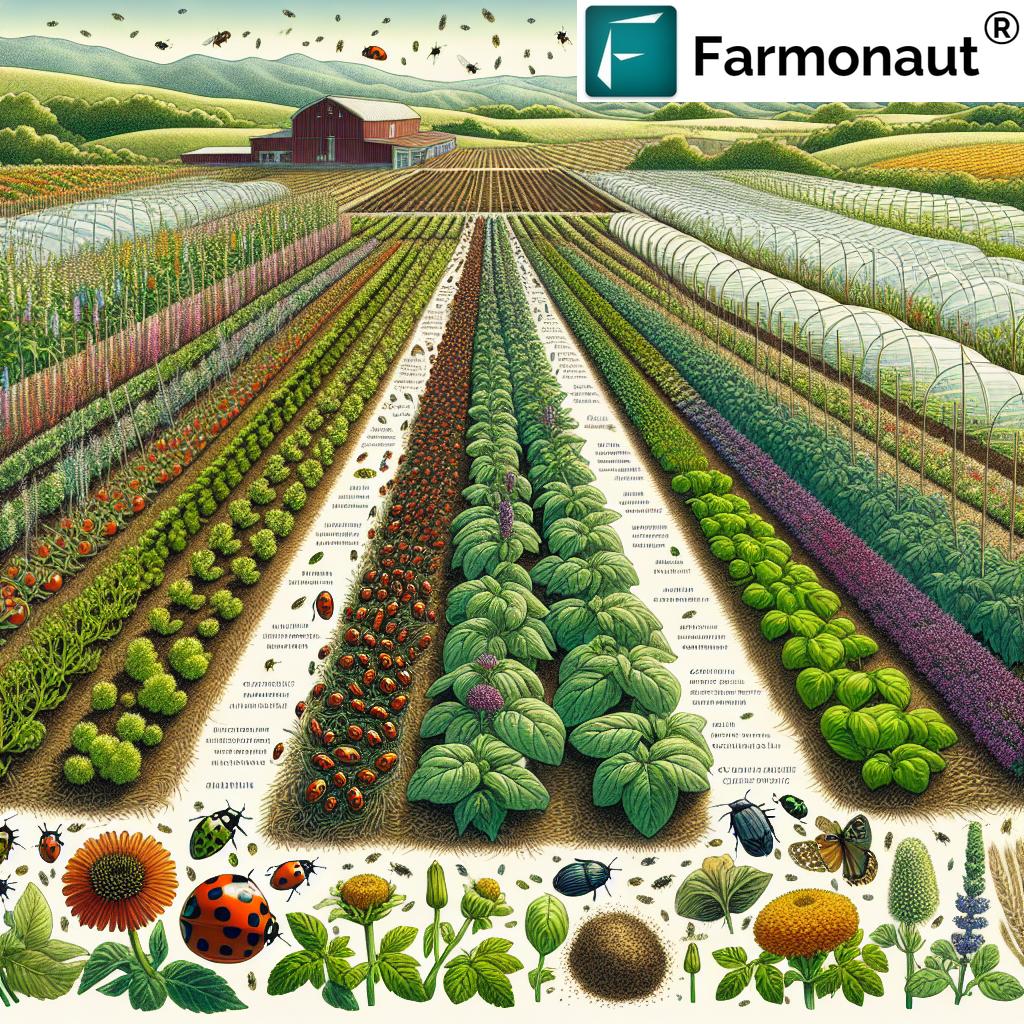Table of Contents
- Understanding Herbicide Resistance: The Modern Agricultural Challenge
- Trivia: Did You Know?
- Mechanisms and Causes of Herbicide Resistance
- Impact of Herbicide Resistance on Crop Yields and Sustainability
- Herbicide Resistance: 7 Shocking Fixes You Need Now!
- Comparison Table: Integrated Weed Management Strategies for Herbicide Resistance
- Farmonaut: Leveraging Innovation for Precision Weed Management
- Frequently Asked Questions
- Conclusion: Moving Forward for Sustainable Agriculture
- Start Your Journey with Farmonaut
Herbicide Resistance: 7 Shocking Fixes You Need Now!
Herbicide resistance is rapidly emerging as one of the greatest challenges in modern agriculture. As we strive to protect crop yields and guarantee food security, we must adapt our weed control practices to manage resistant weed populations effectively. Integrated weed management and sustainable solutions are now our top priorities. Let us guide you through understanding the mechanisms of resistance, its implications, and, most importantly, seven actionable fixes every farmer and agronomist should adopt right now.
Understanding Herbicide Resistance: The Modern Agricultural Challenge
As stewards of global food security, we’re witnessing a troubling phenomenon: the rapid evolution of herbicide resistant weeds. This occurs as weeds gradually evolve mechanisms to withstand and survive the effects of herbicides, ultimately rendering traditional chemical controls ineffective. Our reliance on herbicides for weed management in agriculture has contributed to the accelerated selection of resistant individuals, making integrated weed management not just necessary, but crucial for the future health of our crops and environment.
How Herbicide Resistance Occurs
In every field, when a herbicide is applied, it eliminates the majority of susceptible weed populations. However, a few individuals that carry genetic mutations may withstand the chemical, surviving the application. These survivors then reproduce, passing resistance traits to their offspring. Repeated reliance on a single herbicide or chemical class intensifies selection pressure, allowing resistant populations to become prevalent and far more difficult to control.
The Selection Process and Why It Matters
- Applied Herbicide: Doses applied continually to the same field or with similar action increase the risk of resistance.
- Susceptible Weeds Eliminated: Most weeds are controlled, but a few survive.
- Survivors Pass on Traits: Surviving individuals inherit resistant genes, amplifying resistant populations over time.
- Population Shifts: The weed community shifts towards dominance by resistant individuals, threatening the sustainability of our crop yields and the environment.
The implications of herbicide resistance in agriculture are wide-ranging. From increased production costs to environmental impact, understanding this phenomenon is the first step toward effective management strategies.
Mechanisms and Causes of Herbicide Resistance in Weeds
Herbicide resistance in weeds develops via several complex mechanisms. A nuanced understanding of these mechanisms can help us manage resistant weed populations more effectively and refine our weed control methods. Here are the principal pathways we observe in the field:
Target Site Resistance (TSR): Alterations at the Site of Action
- Definition: TSR occurs when a genetic mutation alters the very site a herbicide is designed to attack, preventing effective binding and neutralization of weed growth.
- Example: Mutations in the acetolactate synthase (ALS) enzyme can confer resistance to widely-used ALS-inhibiting herbicides. Such alterations drastically reduce the efficacy of chemical controls, making weed management increasingly challenging.
Non-Target Site Resistance (NTSR): Enhanced Detoxification and Exclusion
- Definition: NTSR is a mechanism where weeds either rapidly degrade the herbicide or prevent it from reaching sensitive sites inside the plant. This often involves increased metabolic activity through enzyme systems that decompose, sequester, or otherwise modify herbicides.
- Consequence: Such metabolic adaptation means even diverse herbicide modes can become ineffective, further complicating resistance management strategies.
Multiple Resistance: The Most Alarming Scenario
Multiple resistance occurs when weeds evolve resistance to several herbicide modes of action, sometimes through a combination of TSR and NTSR. For example, Palmer amaranth (Amaranthus palmeri) exhibits resistance to glyphosate, ALS inhibitors, and HPPD inhibitors, making this weed particularly difficult to control in modern agricultural systems.
Why Do Weeds Evolve Resistance?
- Widespread and repeated use of a single herbicide or mode of action encourages selection for tolerant individuals.
- Poor weed management strategies neglecting crop rotation and mechanical methods facilitate resistant population growth.
- Failure to integrate cultural, mechanical, and biological controls enhances the risk of resistance spreading unchallenged in our crops.
Impact of Herbicide Resistance on Crop Yields and Sustainability
The impact of herbicide resistance extends far beyond the loss of herbicide efficacy. Our crop yields, environmental health, and economic viability all hang in the balance. As herbicide resistant weeds become more prevalent, the costs and consequences to farming and sustainability multiply.
Key Implications of Herbicide Resistance in Agriculture
- Increased Production Costs: Farmers must apply higher doses of herbicides or switch to more expensive alternatives, often using several different products simultaneously. This increases the financial burden on farming operations and can squeeze already tight profit margins.
- Environmental Consequences: Overusing herbicides contaminates local water sources, disrupts non-target organisms, and reduces on-farm biodiversity. Excess chemical use from failed controls exacerbates sustainability issues and may lead to regulatory scrutiny.
- Yield Loss: Weeds competing with crops for water, nutrients, and light can dramatically reduce crop yields. The effects of herbicide resistance include increased weed pressure throughout the season, further threatening food security.
- Food Security Threat: As resistant populations spread, we risk a significant reduction in food supply, impacting both local economies and global nutrition.
It’s clear that managing resistant weed populations is pivotal for maintaining both short- and long-term productivity. But what are the actionable solutions?
Herbicide Resistance: 7 Shocking Fixes You Need Now!
With the stakes this high, our approach to weed management must evolve. Here are seven transformative fixes that combine chemical, cultural, mechanical, biological, and technological strategies—each backed by science and proven practice—to combat herbicide resistance in modern agriculture.
-
1. Rotate Herbicides with Diverse Modes of Action
Repeatedly using herbicides with the same mode of action accelerates resistance. By rotating between herbicides with different targets and mechanisms of action, we spread selection pressure across weed populations, making it more difficult for any one type of resistance to dominate. Check herbicide labels, and refer to the HRAC Global guidelines for mode of action classification.
-
2. Implement Integrated Weed Management (IWM) Strategies
Integrated weed management brings together cultural, mechanical, chemical, and biological control methods for maximum efficiency. This holistic approach reduces reliance on chemicals alone and helps prevent resistant weed populations.
Key strategies include:- Cultural Practices: Change planting dates, increase crop competition, use cover crops, and alternate crop types to disrupt weed growth cycles.
- Mechanical Methods: Tillage, mowing, and hand-weeding physically remove or damage weeds.
- Judicious Herbicide Use: Apply herbicides according to best management practices, using them only when necessary.
- Biological Control: Promote beneficial insects, bacteria, or fungi that suppress weed populations.
Learn more in the comprehensive article from Illinois Extension.
-
3. Scout and Monitor Fields Proactively
Regularly monitor your fields to spot the first signs of resistance. Early intervention can prevent the spread of resistant populations. Digital tools, such as Farmonaut’s satellite monitoring and AI-based advisory system, help us make informed, timely decisions—a proven way to control weed growth before it spirals out of control.
Recommended Resource: Try Farmonaut’s real-time crop health and weed monitoring platform for fast, data-driven insights. -
4. Use Mechanical and Physical Weed Control Methods
Don’t underestimate the power of cultural and mechanical weed control. Methods like tilling, burning, mowing, or mulching can disrupt weed life cycles, remove seed banks from the soil, and reduce dependence on chemical controls. This is especially important where chemical resistance has rendered herbicides ineffective.
-
5. Integrate Advanced Technologies: AI, Robotics, and Satellite Monitoring
Technology shifts the pace and scope of weed management. Satellite monitoring, such as that offered by Farmonaut, empowers farmers to identify problem areas at an early stage. Precision herbicide application using AI and autonomous vehicles targets only resistant weeds, minimizing chemical exposure to sensitive sites and the environment.
Further Reading: Robotics and AI in Weed Control -
6. Practice Cultural Controls to Reduce Weed Pressure
Employ tactics that promote robust crop growth and disadvantage weeds. These include crop rotation, cover cropping, high-density planting, and selecting competitive crop varieties. Effective crop rotation not only disrupts weed life cycles but also improves soil health, boosts yields, and reduces long-term weed problems.
Example: Alternating between cereal and broadleaf crops interrupts the reproduction cycles of specific problem weeds. Cover crops can suppress weed emergence and provide erosion control, helping conserve water and nutrients for main crops. -
7. Avoid the Temptation of Overreliance on Any Single Method
The ultimate fix: avoid placing all your eggs in one basket. Use herbicides, mechanical, biological, and cultural controls in rotation and combination. This balanced IWM approach prevents resistant populations from gaining a foothold, secures more reliable yields, and supports sustainable farming practices.
Comparison Table: Integrated Weed Management Strategies for Herbicide Resistance
Integrated weed management is at the heart of sustainable, effective weed control. Let’s visually compare the most effective strategies for managing resistant weed populations in agriculture:
| Strategy | Estimated Effectiveness (% reduction in resistant weeds) | Environmental Impact | Implementation Cost | Sustainability Score (1-5) |
|---|---|---|---|---|
| Crop Rotation | 45-60% | Low | Low | 5 |
| Mechanical Weeding (Tillage, Mowing) | 30-55% | Medium | Medium | 4 |
| Chemical Herbicide Rotation | 35-50% | Medium | Medium | 3 |
| Cover Cropping | 25-45% | Low | Low | 5 |
| Biological Control | 20-30% | Low | Low-Medium | 5 |
| Precision Herbicide Application (AI/Robotics) | 50-70% | Low | Medium-High | 4 |
This table highlights that while chemical control remains essential, combining multiple weed control methods (mechanical, cultural, high-tech) achieves higher sustainability and effectiveness in combating resistance. By investing in integrated approaches today, we build a resilient future for crop production and environmental health.
Farmonaut: Leveraging Innovation for Precision Weed Management and Sustainability
Adopting advanced data and technology in weed management strategies is no longer a luxury—it’s a necessity for every progressive farm. Farmonaut brings affordable, scalable solutions to our fingertips, putting power back into the hands of farmers, agronomists, and businesses alike.
What Makes Farmonaut Different?
- Satellite-Based Crop Health Monitoring: Farmonaut empowers us with real-time satellite insights—detecting anomalies in vegetation health and soil moisture. Early detection of resistant weed populations allows for smart targeting, reducing unnecessary herbicide exposure.
- AI-Based Advisory Systems: Personalized advice through Jeevn AI helps optimize every farm input—including irrigation, fertilizer, and pest/weed management. With AI, we can interpret complex data and act before resistance takes hold.
- Resource Management: Farmonaut’s suite includes fleet tracking and carbon footprinting. Efficient vehicle/resource allocation and transparent emissions data contribute to cost-effective, sustainable farming practices.
- Blockchain Traceability: For those needing end-to-end transparency, blockchain traceability ensures that crops are tracked securely from farm to consumer, vital for compliance and market access in sustainability-focused supply chains.
- Custom API Access: For developers and businesses, Farmonaut’s API and developer documentation deliver streamlined integration of vital crop, weather, and resource management data into your custom platforms.
- Large-Scale Farm Management: Agribusinesses and organizations benefit from large-scale management solutions, gaining oversight over vast landholdings and ensuring best practices across every hectare.
Farmonaut isn’t tied to any single input or machinery provider—and doesn’t sell or manufacture farm products. Instead, our focus is purely on enabling better, data-driven agricultural decisions for everyone, everywhere.
Supporting Farmers’ Access to Financing and Sustainability
With remote-sensing verification for crop loans and insurance, farmers can easily meet documentation needs, lower fraud risks, and improve access to much-needed capital during planting or in case of crop losses. Environmental regulations are also easier to meet when you can track emissions and resource use in real time.
Mobile and Global—Accessible for All
Our mobile apps (Android, iOS), web interface, and scalable API make these technologies accessible, no matter your operation size or geography. Sign up and put the world’s best satellite and AI farming tools to work on your fields today.
Frequently Asked Questions (FAQ)
What is herbicide resistance and why does it matter?
Herbicide resistance is when weed populations evolve genetic or metabolic mechanisms allowing them to withstand previously effective herbicides. It matters because uncontrolled resistant weeds can drastically impact crop yields, increase production costs, and threaten food security and sustainability.
How can we prevent weeds from developing resistance?
Use a combination of cultural, mechanical, chemical, and biological methods. Rotate herbicide classes, monitor fields frequently, and adjust weed control practices regularly to avoid overreliance on any one strategy.
Are integrated weed management (IWM) strategies effective against resistant weed populations?
Yes, IWM strategies combine multiple approaches, spreading selection pressures and mitigating the risk of resistance while improving yield stability and environmental health.
How do technologies like AI and satellite monitoring help fight herbicide resistance?
AI and satellite tools, such as those provided by Farmonaut, pinpoint problem areas early, guide targeted interventions, optimize inputs, guide precision herbicide application, and reduce environmental impact of agriculture.
What are the environmental benefits of reducing chemical herbicide use?
Less chemical use reduces water and soil contamination, protects beneficial organisms, increases biodiversity, and promotes sustainable farming—boosting both yields and long-term environmental health.
Conclusion: Moving Forward for Sustainable Agriculture
Herbicide resistance is a fast-growing challenge that threatens crop yields, food security, and environmental health globally. However, by embracing integrated weed management, rotating herbicides, employing cultural and mechanical control, monitoring fields with AI and satellites, and prioritizing sustainability—all supported by innovations like Farmonaut—we can regain control over resistant weed populations. Let’s harness the full power of data, technology, and good stewardship to ensure our farming practices remain economically viable, effective, and sustainable for generations to come.
Start Your Journey with Farmonaut
Ready to integrate advanced data and technology into your weed management and crop production strategies? Join Farmonaut and empower your farm with leading precision agriculture solutions. Affordable, scalable, and accessible worldwide.





















